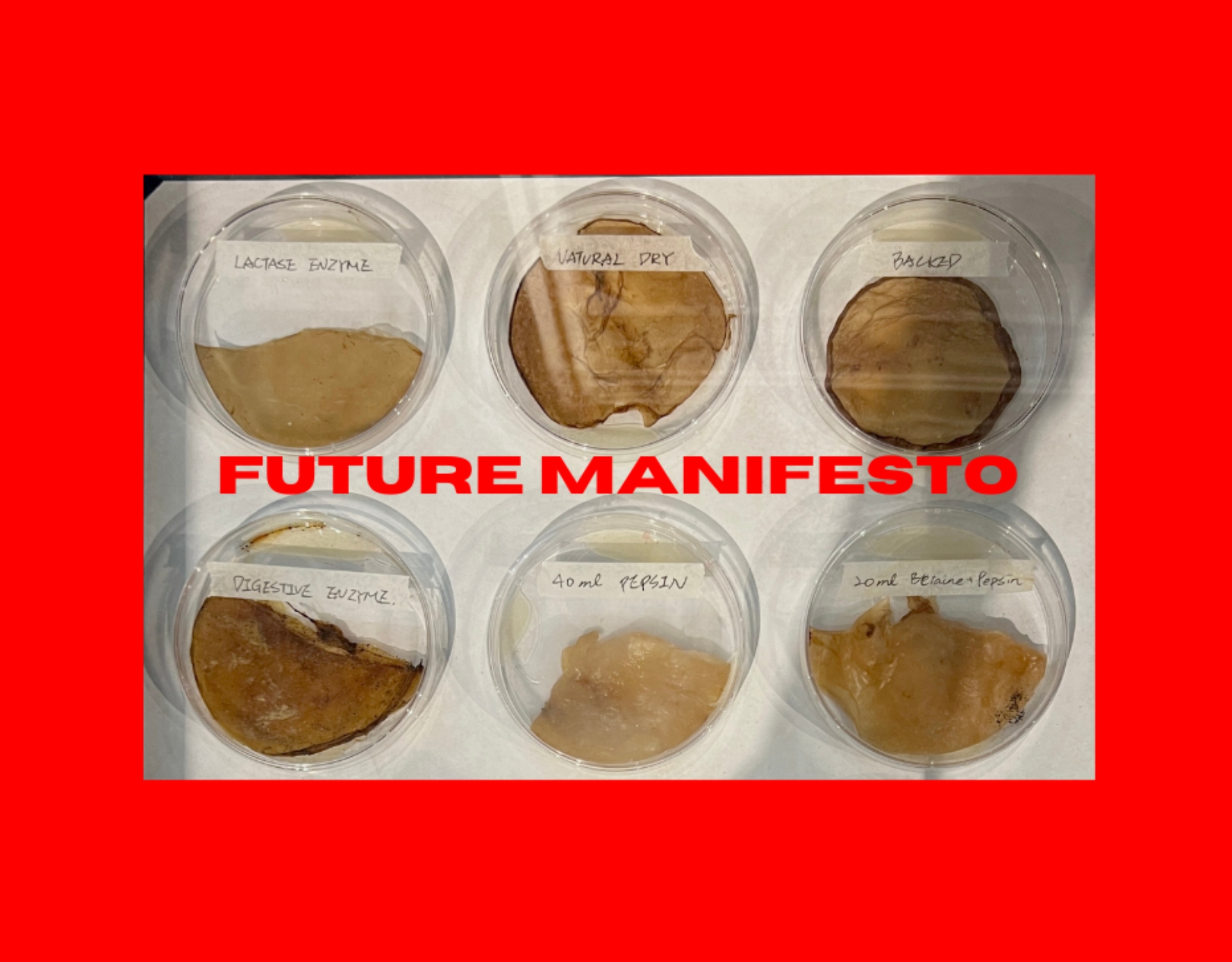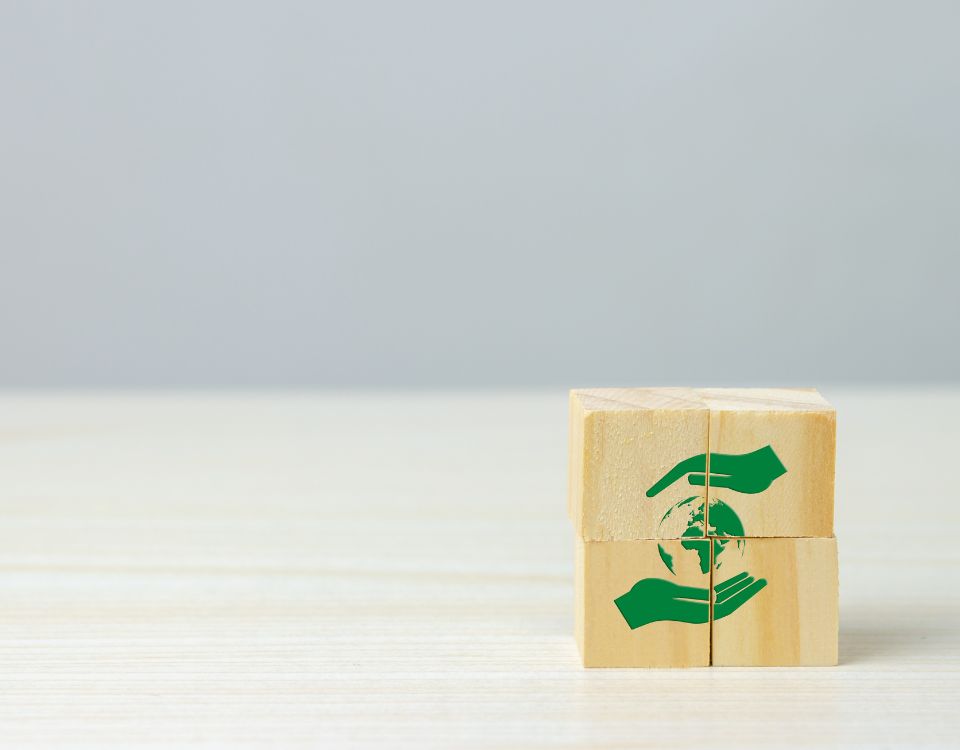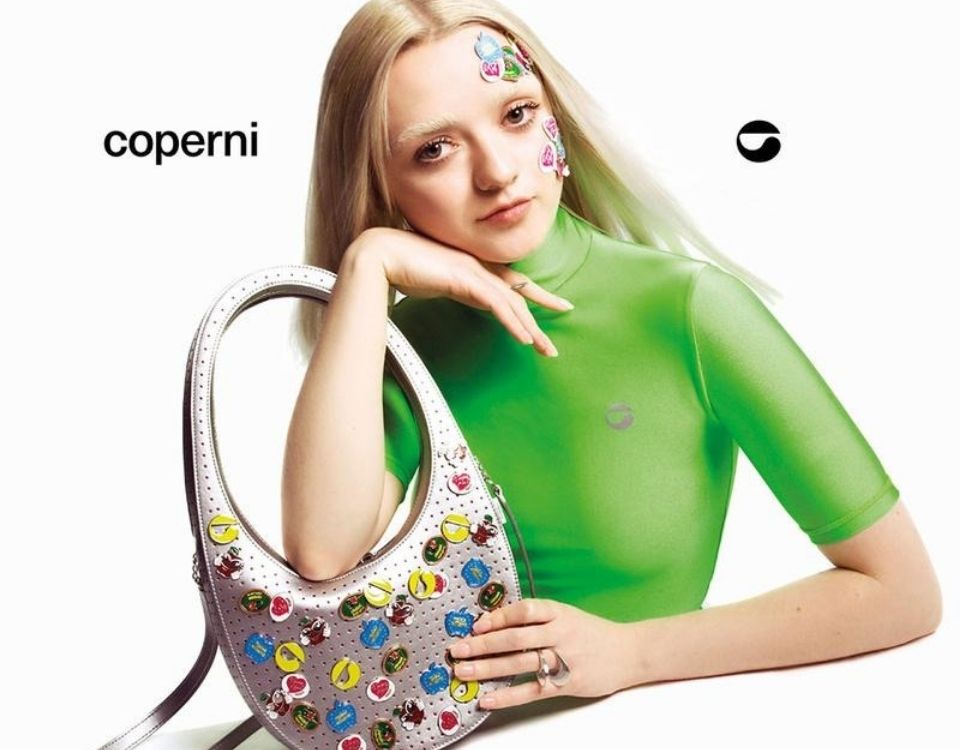Fashion companies and tech companies are partnering up to co-create a circular fashion system. From recycled fabric and new materials for production, to technology that improves transparency in supply chains, there are sustainable fashion technology movements in every level of the industry.
New Fabric Innovation:
Recycled Fabrics
Prada and its Re-Nylon Permanent Line | Credits: Prada
One of the most popular way for brands to become a little more sustainable nowadays is by using recycled fabrics and other ethical materials. Polyester is the most common synthetic fabric used to make fashion garments and recently, thanks to technological advances, it has been made from recycled plastic water bottles. PET is used as the raw material for recycled polyester which makes it slightly different to the traditional fabric. It is made by plastic bottles being sterilised, dried and crushed into tiny chips. Then they are spun into a yarn which eventually is woven to become fabric. The sustainable activewear brand T/ALA uses recycled nylon and Q-Nova, both fabrics that are made from regenerated waste materials. More over, bigger companIes such as Adidas, also aims to make more from recycled plastic waste this year. Meanwhile fast fashion giants such as Zara promises to only use organic, sustainable or recycled cotton, linen and polyester to make its clothing by 2025, and H&M pledes promises to do the same by 2030.
Ethical Fabrics

Some companies have been investigating and innovating to sustainable alternatives to materials. The ethical clothing company Pangaia worked on the development of flower down, an alternative to goose down that provides the same warmth, but much more ethically. The material took over 10 years to develop and is made from dried wildflowers and a biopolymer. Also in Europe – Rombaut, is another amazing emerging designer brand that incorporate vegan fruit and veggie leather into his street style fashion accessories and sneakers. One of his noticeable boots are loved by Bella Hadid and many Instagram influencers. And of course, we couldn’t miss the British sustainable fashion designer Stella McCartney’s collection with zero animal products.
Emerging New Sustainable Fashion Technologies:
3D Printing
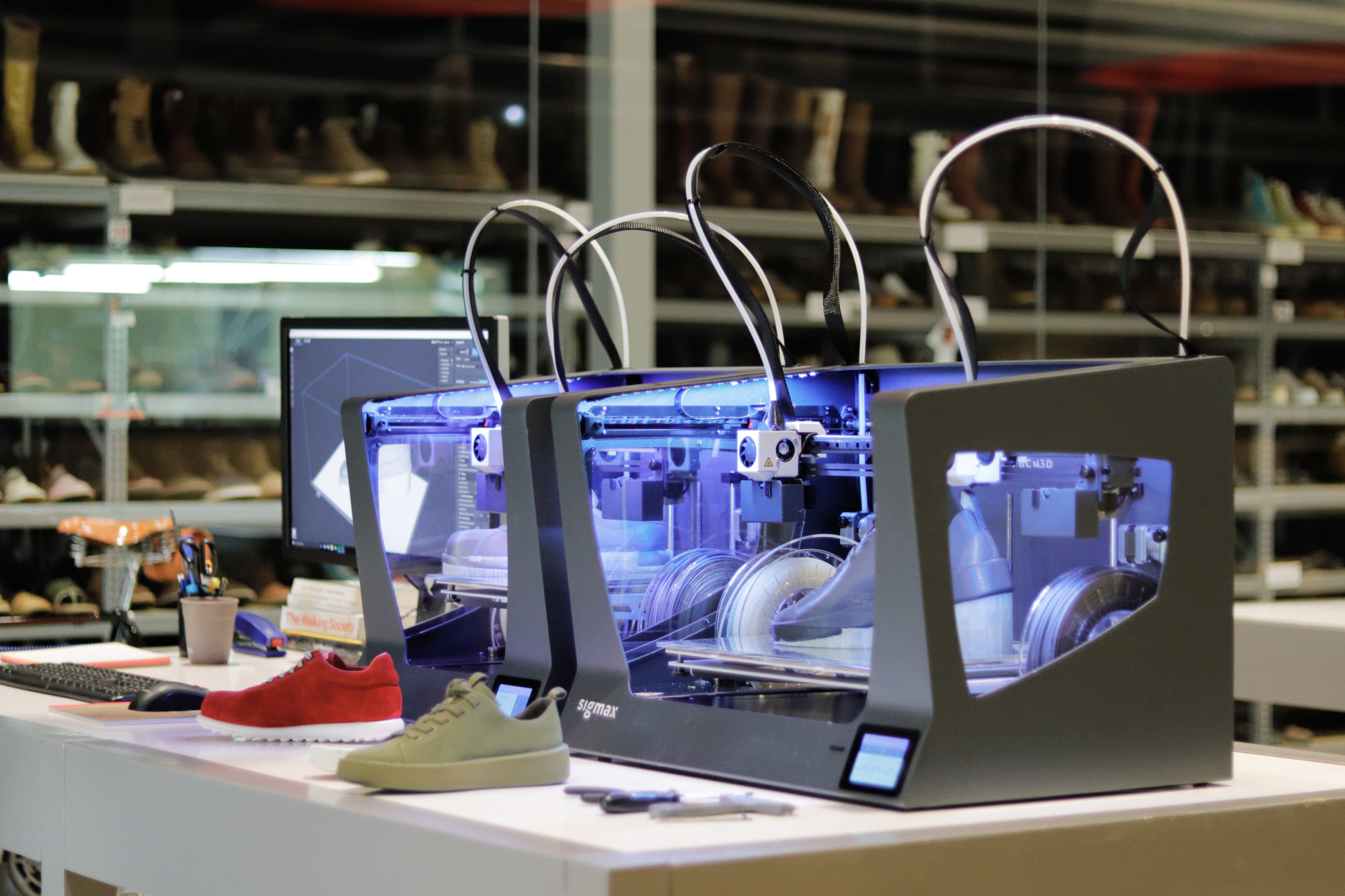
One key issue with the production of garments is the amount of fabric wasted. 3D printing allows a garment to be produced according to exact demand, eliminating the meters of wasted fabric involved in traditional garment production. The first 3D printed piece of clothing took 7 days to make, but due to technological advancements, various materials can now be made such as FilaFlex. Eliminating textile scraps and the need for dyes which can cause water pollution is a fantastic move towards sustainable fashion production. There is also less air pollution and water use involved in 3D printed clothing as opposed to the traditional industrial methods. 3D printing is currently used more for small clothing details like embellishments and buttons, but it has also proven useful in the design process, like with the Spanish trainers brand Camper.
Blockchain Technology & Big Data
The physical production of a garment is not the only site where sustainable improvements can be made using technology. As education and awareness has increased about the environmental impacts of fast fashion, more people are demanding to know who made their clothes.
Blockchain technology is a public ledger which records all transactions. It can therefore track the entire journey of a fashion garment, from production through all the complicated supply chains to the consumer. Blockchain technology offers the opportunity for transparency, which can hold stakeholders accountable in the fashion supply chain, and therefore give consumers the information to make more ethical consumer choices. IBM’s NYC company Armonk will partner with Kaya&Kato, a German textile manufacturer to develop a blockchain network that does exactly what we mentioned above. The new application will allow Kaya&Kato’s suppliers and customers to track the beginning and end of a fabric’s process.
Sustainable Fashion Brands
BESTSELLER and Zalando and Kering, the mother company that owns Gucci, Saint Laurent, Bottega Veneta, partnered with Fashion for Good Platform once again to explore and develop further on blockchain technology and fabric sustainability in hopes to bring this closer to consumers. The Viscose Traceability Project is a 9-month project that brings TextileGenesis™ to trace the textile supply chain, we will revisit this later to update their progress.
Stella McCartney is another brand on the watch. Google Cloud UK had partnered with the brand to analyze and predict future environmental impact on production processes.
Have you considered sustainable fashion?
Use the fashion footprint calculator to check out the greeness of your closet.
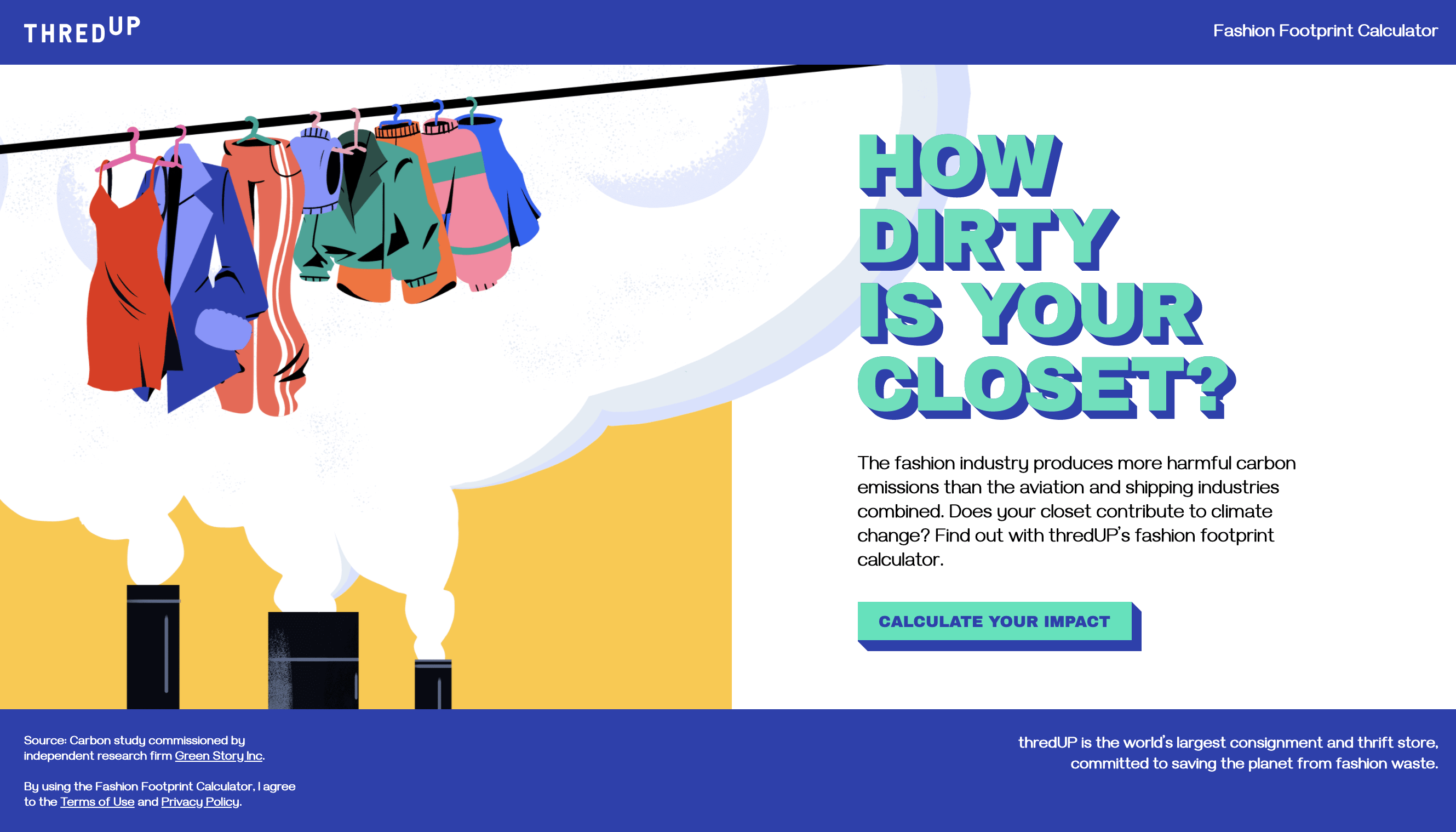
The sustainable fashion site thredUP has created a fashion footprint calculator which allows consumers to discover how dirty their wardrobe is for the planet. It asks a series of questions and uses information and statistics to calculate the carbon emissions your consumer fashion habits are generating.We advise you to re-visit the test in a couple of months to see if you are more sustainable.
Looking back over the last 10 years, it is clear how far technology has advanced and given rise to new sustainable initiatives. Sustainable fashion technology is everywhere from the fabrics used to the consumer decisions we make. Technology is perfectly poised to reshape the fashion industry into one that is far kinder to the environment and to people. We only have to wait and see what the next innovation will bring. Next time when you are shopping, consider reading about the brand’s sustainable innovation page first before purchasing.
Want to share news on fashion/technology/innovation with us? Or would like to contribute? Send us a message!
